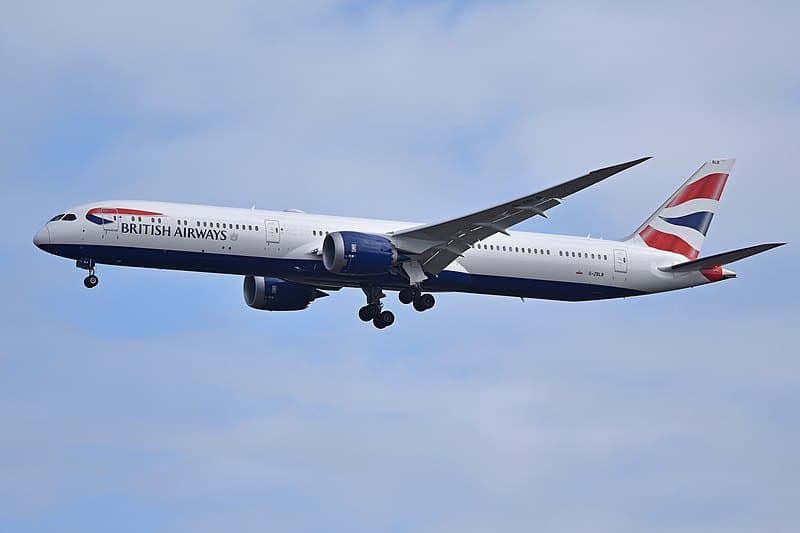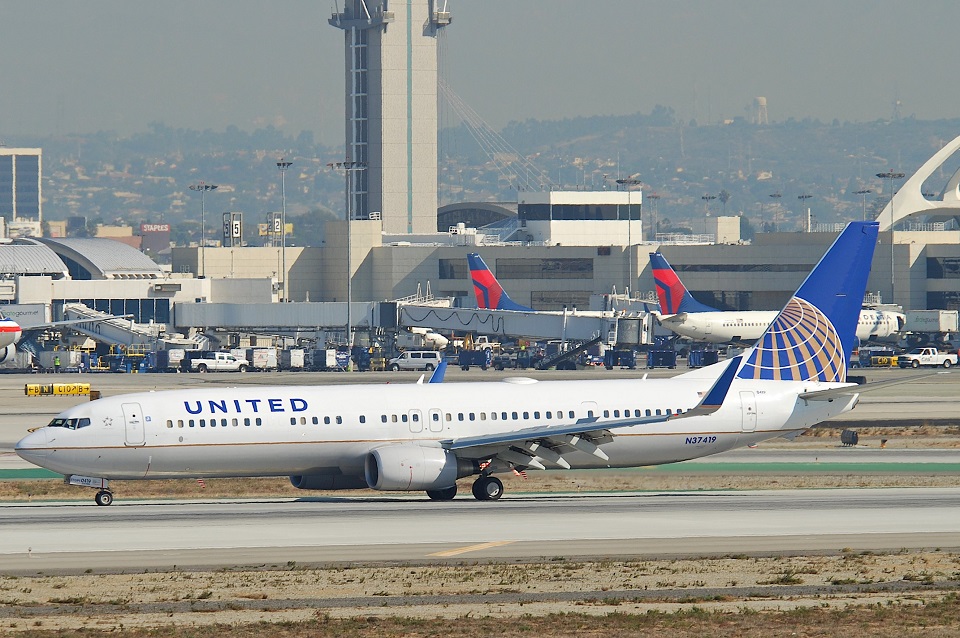Aviation
FAA proposes requiring four key Boeing 737 MAX design changes
FAA proposes requiring four key Boeing 737 MAX design changes

FAA proposes requiring four key Boeing 737 MAX design changes
Today, the FAA sent a notice of proposed rulemaking (NPRM) for a Boeing 737 MAX airworthiness directive (AD) (PDF) to the Office of the Federal Register for publication. The NPRM proposes mandating a number of design changes to address an identified unsafe condition. When the NPRM publishes in the Federal Register, a 45 day public comment period will begin. The FAA is posting the NPRM on its website today to enable the public to begin review early.
The FAA proposes to supersede Airworthiness Directive (AD)
2018-23-51, which applies to all The Boeing Company Model 737-8 and 737-9 (737 MAX) airplanes. Since AD 2018-23-51 was issued, the agency has determined that final corrective action is necessary to address the unsafe condition.
- require installing new flight control computer (FCC) software,
- revising the existing Airplane Flight Manual (AFM) to incorporate new and revised flightcrew procedures,
- installing new MAX display system (MDS) software,
- changing the horizontal stabilizer trim wire routing installations,
- completing an angle of attack sensor system test,
- performing an operational readiness flight
10 Facts You Should Know About Lufthansa
Through a thorough, transparent, and inclusive process, the FAA has preliminarily determined that Boeing’s proposed changes to the 737 MAX design, flightcrew procedures and maintenance procedures effectively mitigate the airplane-related safety issues that contributed to the Flight 610 and Flight 302 accidents. The FAA further preliminarily determined that the proposed design change also address additional safety concerns beyond those identified during the accident investigations. This report does not address other safety issues that might have contributed to the accidents but are not related to airplane design. This includes the airline maintenance practices, the aircraft operators’ compliance posture, and pilot training effectiveness. The FAA believes recommendations related to these other potential contributing factors should be addressed by thappropriate organizations: Preliminary Summary of the FAA’s Review of the Boeing 737 MAX
Boeing Delivers First 737 MAX to Jet Airways
Return to Service:
The FAA would revise the Emergency Order of Prohibition to allow the 737 MAX to return
to service based on completion of the following actions:
Completion of all TAB return to service (RTS) recommendations and acceptance by
the TAB of those completed actions.
Successful completion by Boeing — and acceptance by the FAA — of all regulatory
requirements, including aircraft design, documentation, training, and maintenance
aspects.
Publication of two Notices to FAA inspectors containing national policy on minimum
required maintenance program changes and pilot training program changes that
relate to the 737 MAX design change. The Notices direct FAA maintenance and
operations inspectors to mandate the changes to U.S. air carrier maintenance
programs and pilot training programs in accordance with applicable U.S. operating
rules.
Issuance of an AD that will provide specific instructions for steps the FAA deems
necessary that owners or operators must take to correct the unsafe condition, and
to support public confidence.
Additionally, the following conditions would be prerequisites to resuming operations in the
U.S.:
Preliminary Summary of the FAA’s Review of the Boeing 737 MAX
14
For previously delivered 737 MAX airplanes, owner/operators must incorporate all
FAA-mandated design changes and maintenance actions.
For any future delivered 737 MAX airplanes, Boeing is required to incorporate the
same mandatory actions.
All 737 MAX operators must complete all pilot training identified in the revised 737
MAX FSB report.

Aviation
Air India’s B747 Makes Its Final Journey, Waving Farewell to Fans

In a poignant moment marking the end of an era in aviation history, Air India’s iconic Boeing 747 aircraft, affectionately known as the ‘Queen of the Skies,’ embarked on its ultimate journey from Mumbai’s international airport.
The departure, bound for Plainfield, USA, where it will undergo dismantling and part-stripping under the ownership of American AerSale, signals the closure of a storied chapter for the airline.
Once revered for transporting dignitaries ranging from prime ministers to presidents, the Boeing 747 has etched itself into aviation lore. Yet, as airlines worldwide pivot towards more contemporary and cost-effective aircraft, Air India’s decision to bid farewell to its remaining Boeing 747s reflects the pragmatic realities of today’s aviation landscape.
The sale of these majestic planes to AerSale represents a strategic move by Tata Group, Air India’s new custodian, towards optimizing operational efficiency and embracing modern industry standards. Out of the four aircraft sold, two will be repurposed into freighters, while the remaining pair will be meticulously disassembled to salvage valuable components.
The final flight from Mumbai witnessed a touching tribute as pilots performed a traditional ‘Wing Wave,’ symbolizing the conclusion of the Boeing 747‘s distinguished service with Air India. This poignant gesture encapsulates the deep sentiment attached to the aircraft’s departure and its significant contribution to the airline’s legacy.
As the Boeing 747 embarks on its journey to Plainfield, USA, nostalgia permeates the air, evoking memories of its maiden flight on March 22, 1971. Over five decades, Air India operated a total of 25 Boeing 747s, each leaving an indelible mark on the annals of aviation history.
Middle East
British Airways Resumes Daily Flights to Abu Dhabi, After 4-Year hiatus

British Airways made its way back to Abu Dhabi, landing at Zayed International Airport. Following a four-year break in service, both crew and passengers were greeted with enthusiasm.
In the summer of 2024, British Airways plans to launch a daily route, utilising a Boeing 787-9, from London Heathrow to Abu Dhabi. The new route enhances ties between the UAE and the UK and expands vast worldwide network, catering to passengers who may be visiting friends and family or travelling for business.
Arriving in Abu Dhabi at 08.30+1, flight BA073 to Abu Dhabi leaves London Heathrow at 22.25. Departing at 10.10 and landing at London Heathrow at 15.20 is the inbound flight (BA072).
The chief executive officer and managing director of Abu Dhabi Airports, Elena Sorlini, stated: “We are delighted to welcome British Airways to Zayed International Airport. Their daily schedule is expected to improve connectivity and stimulate travel and business.” Visitors may experience the dynamic capital of the United Arab Emirates like never before at our brand-new, award-winning, state-of-the-art terminal, where they will be welcomed with the best kind of Emirati hospitality.”
Flight schedule:
| London Heathrow (LHR) to Zayed International (AUH)All times are local | ||||||
| Season | Flight number | Departing LHR | Arriving AUH | Flight number | Departing AUH | Arriving LHR |
| Summer ‘24 | BA73 | 22:25 | 08:30+1 | BA72 | 10:10 | 15:20 |
| Winter ‘24 | BA73 | 22:25 | 09:30+1 | BA72 | 11:10 | 15:20 |
Aviation
FAA investigation: Passenger seated in Captain’s seat inside cockpit at cruising altitude

A viral video capturing a startling moment aboard a United Airlines charter flight from Denver to Toronto has triggered a federal investigation.
The footage, initially shared on social media by Hensley Meulens, the hitting coach for the Colorado Rockies baseball team, depicts a member of the coaching staff seated in one of the pilot seats while the aircraft was in mid-flight.
In his caption, Meulens expressed gratitude to the captain and first officer for allowing him this unusual experience. The video, filmed by another passenger, reveals the cockpit door open, and at one point, a third passenger briefly enters the flight deck. Alarmingly, during this time, the captain was absent from the cockpit.
Despite the flight being a private charter operated by United Airlines, company and Federal Aviation Administration (FAA) regulations strictly prohibit passengers from entering the cockpit during flight or leaving the flight deck unsecured.
United Airlines swiftly responded, expressing deep concern over the incident. A spokesperson emphasized that the video depicted an unauthorized person in the flight deck at cruising altitude with the autopilot engaged, constituting a clear violation of safety and operational policies.
The FAA confirmed that it is actively investigating the incident, highlighting that unauthorized access to the flight deck during flight is a violation of federal regulations. The agency assured that it is taking the matter seriously and will conduct a thorough examination to ensure compliance with aviation safety standards.




























